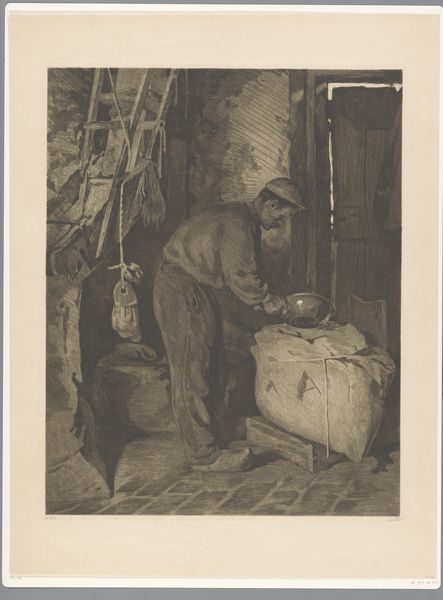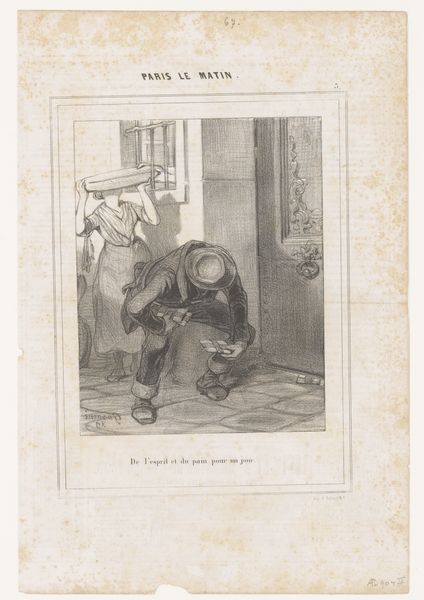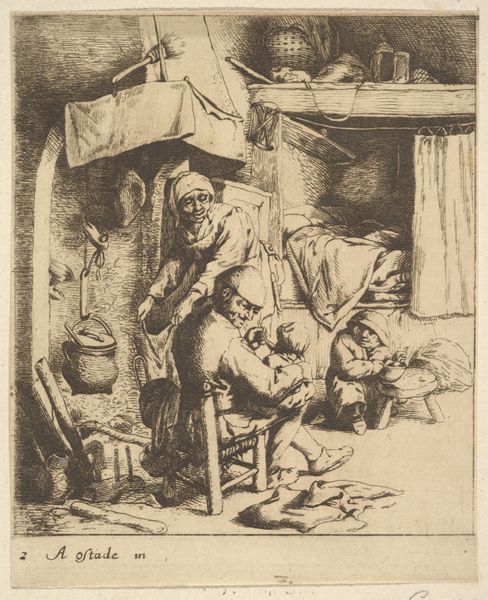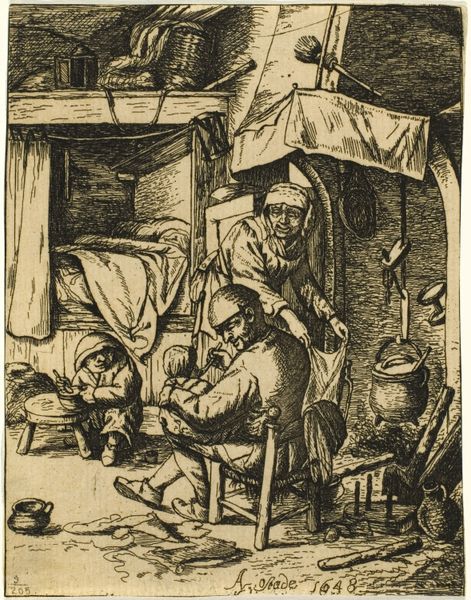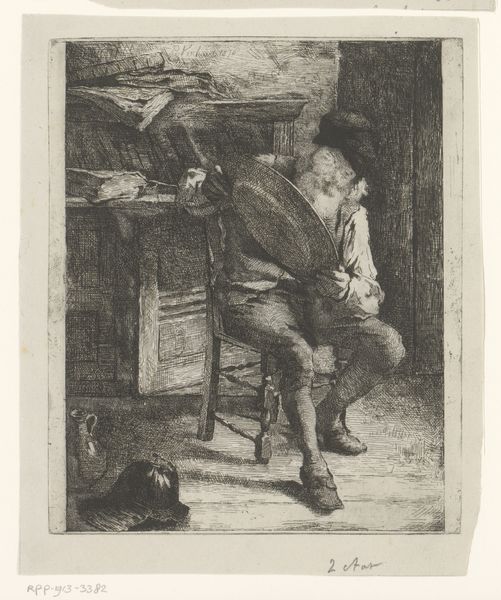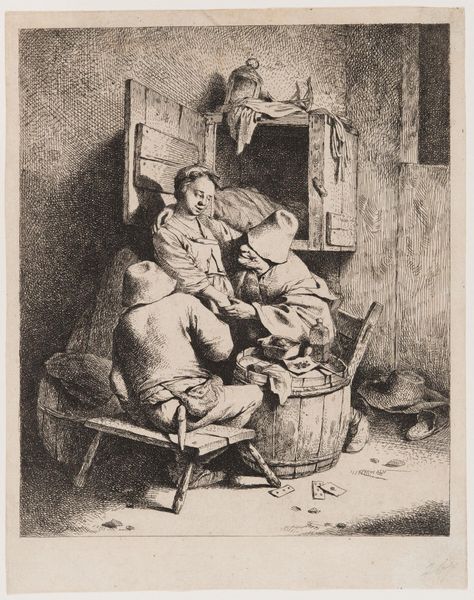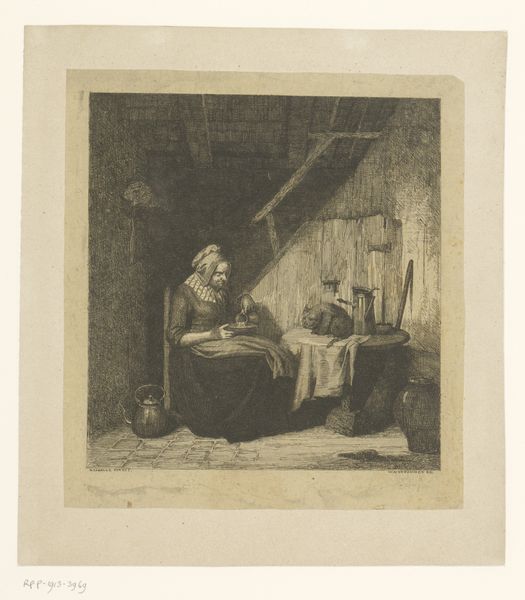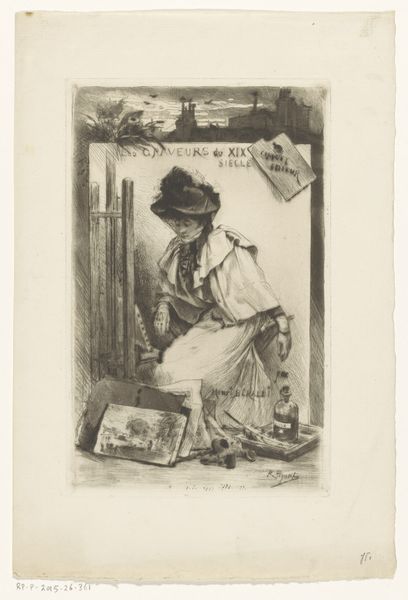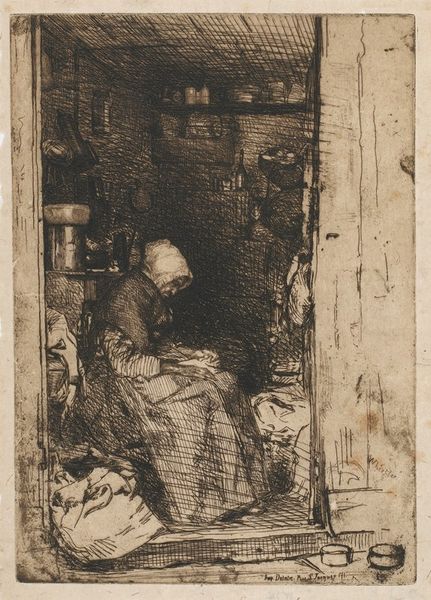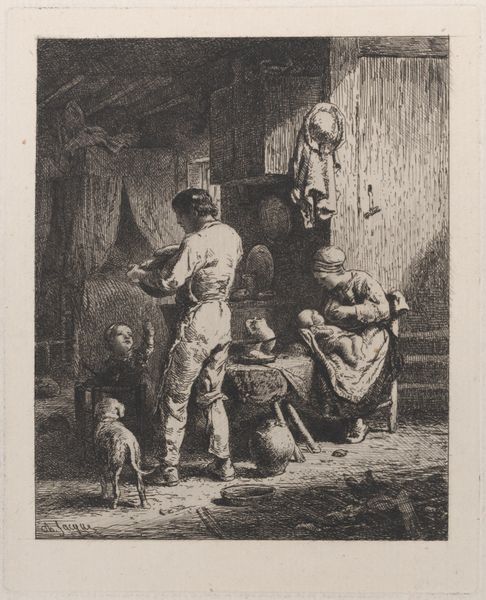
Molenaar in de korenmolen van Wijk bij Duurstede vult een zak meel c. 1908
0:00
0:00
drawing, paper, ink
#
portrait
#
drawing
#
dutch-golden-age
#
landscape
#
paper
#
ink
#
19th century
#
genre-painting
#
realism
Dimensions: height 627 mm, width 500 mm
Copyright: Rijks Museum: Open Domain
Curator: Here we have Willem Witsen’s drawing, "Molenaar in de korenmolen van Wijk bij Duurstede vult een zak meel," from around 1908. The work, rendered in ink on paper, currently resides at the Rijksmuseum. Editor: My first impression? A pervasive sense of stillness and subdued activity, captured by these intricate lines, that lend texture and depth to this unassuming space. Curator: Yes, the level of detail is compelling. It's a powerful snapshot, really, reflecting a timelessness intrinsic to rural life, of labor, industry. We can glean insight into the symbolic nature of milling. Grain as sustenance, the transformation, alchemy if you will, occurring within these walls. A place where earth becomes provision. Editor: I see how you draw those cultural associations. The weight of history embedded in this scene is undeniable. I’m drawn to the diagonal lines used to render light falling through the opening behind the miller. Note how it illuminates the very act of measuring the flour while casting the left side of the composition into relative darkness. Curator: And how Witsen captures that sense of weight! The sagging bag, the posture of the miller, bending over his work. It speaks to the realities of physical labor. Editor: The subtle gradations achieved using only line work really make you contemplate the materials too. I see the texture of the wooden planks, the rough surface of the flour sack. There's a palpable tactile quality conveyed solely through mark-making. Curator: It transcends being a mere genre scene; Witsen captures a universal human experience in microcosm. The essence of providing, contributing, being part of a vital chain. The drawing embodies concepts of purpose, cyclical processes and tradition. Editor: Indeed, observing how this work uses simple lines and textures encourages reflection. The artist's mark making echoes the labor depicted, highlighting the interconnectedness of creator, subject and viewer. Curator: It makes one appreciate the profound beauty often found in what appears mundane, capturing an almost holy spirit that underlies such activity, preserving its integrity. Editor: Yes, and examining the balance between light and shadow reveals layers of meaning—making us ponder the interplay of labor, art, and meaning that quietly pervades the drawing's depths.
Comments
No comments
Be the first to comment and join the conversation on the ultimate creative platform.
